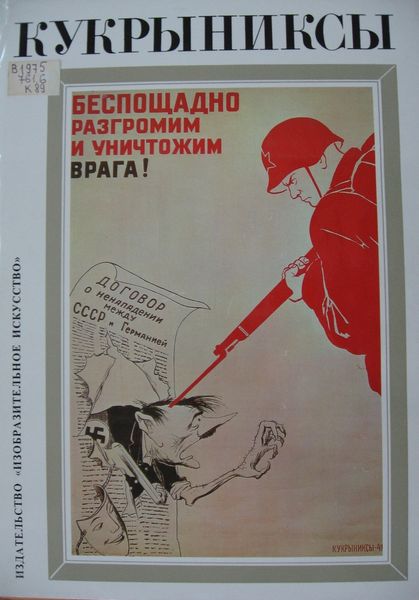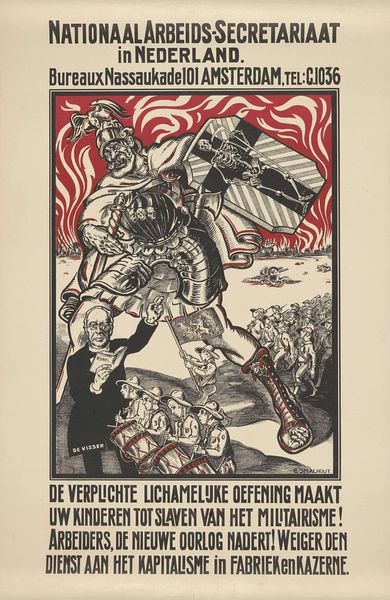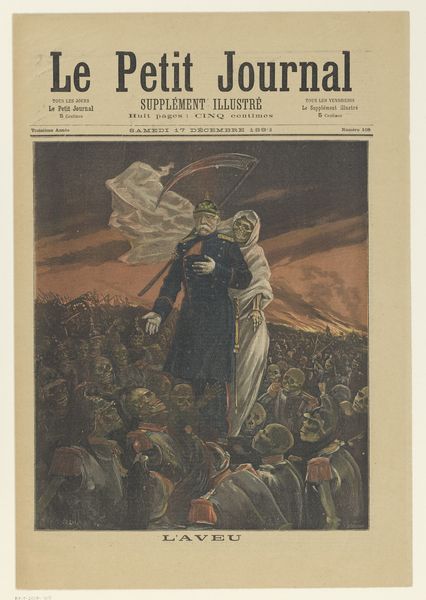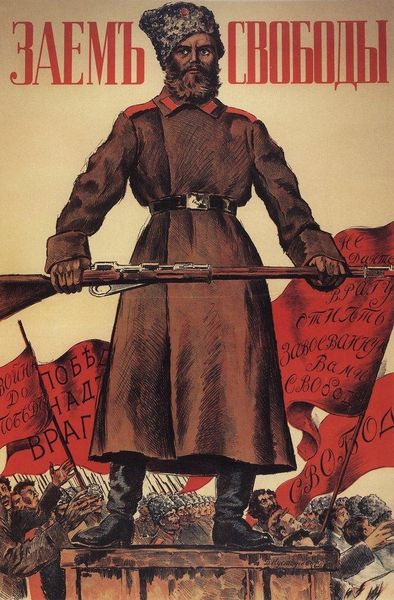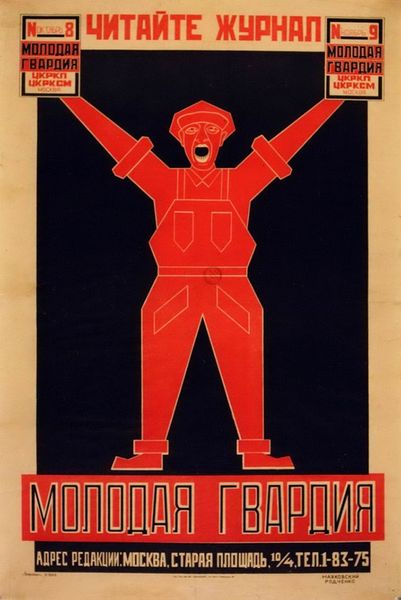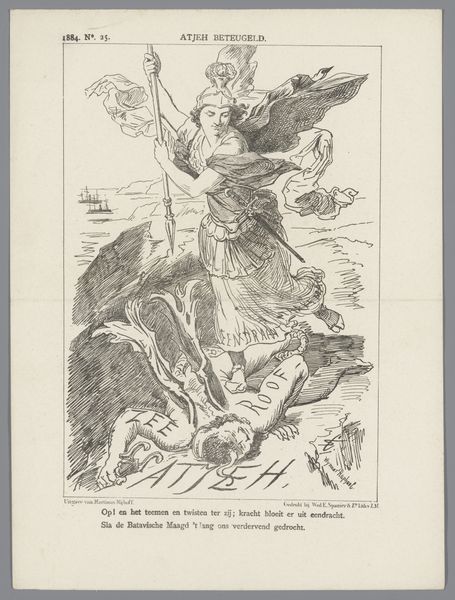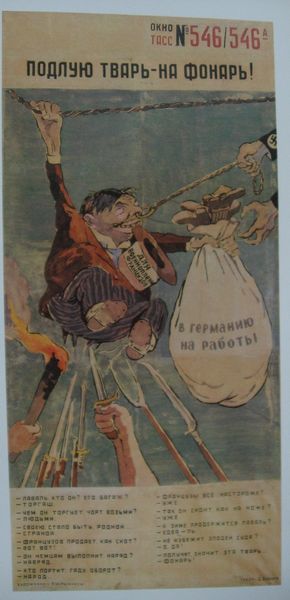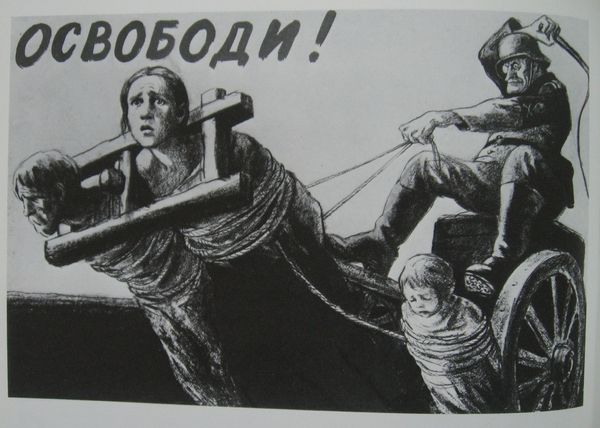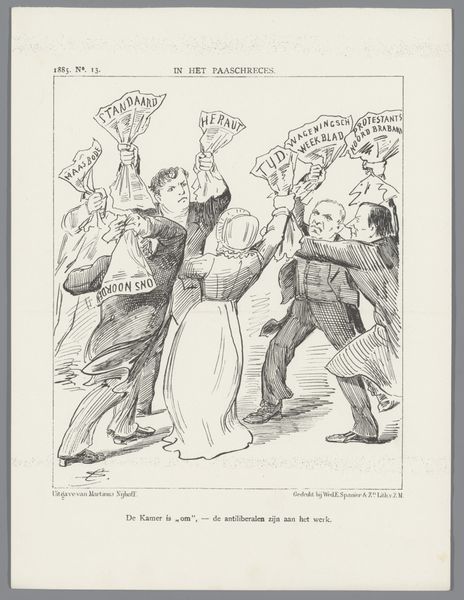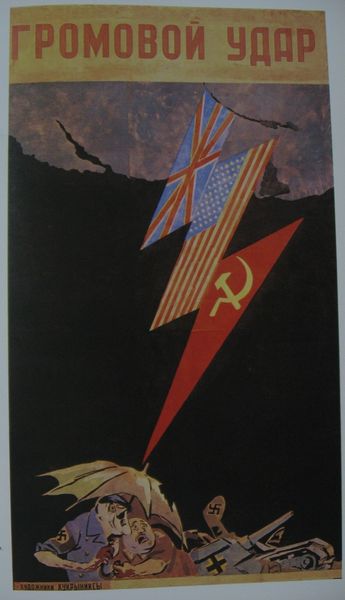
graphic-art, print, poster
#
graphic-art
#
narrative-art
# print
#
social-realism
#
poster
#
modernism
Dimensions: height 51.2 cm, width 34.1 cm
Copyright: Rijks Museum: Open Domain
Curator: Here we have "Afweerfront; orgaan der rode hulp," a striking 1935 poster associated with the Rode Hulp. Its medium combines printmaking and graphic art elements. Immediately, I’m struck by the tension created by the red against the black and white, very Constructivist in nature. Editor: Yes, the stark contrast is the first thing that jumps out. It’s raw, urgent. Beyond the pure formalism of it, red traditionally symbolizes so many things. Here, the vibrant flag immediately recalls revolution and sacrifice but it could equally speak of fury. Red catches the eye, and in this context, it commands attention with its symbolic weight, representing resistance, but who do you imagine it's geared towards? Curator: Absolutely. And notice the central figure, a woman, bravely holding aloft that powerful red banner. In many ways the woman feels allegorical – mother earth even – as an organizing symbol, drawing strength from traditional imagery of hope but acting with determination in new cultural territory. In visual terms, the positioning of the Red Flag is brilliant too, breaking up an otherwise bleak composition. Editor: A clever visual motif, definitely! That flag acts as the vector in an otherwise disordered and bleak composition. This compositional focus draws the viewer to the figure and towards those men advancing behind. It creates a stark reminder of history, the text alludes to "De Commune van Parijs, 18 Maart 1871," while seemingly advocating for the antifascist refugee movements of the 1930s, but I wonder how this intertextuality shapes viewers understandings of justice in a wider field. Curator: I agree; seeing these symbols coalesce like that highlights not only the struggles of the past but also the urgent need for compassion and action in the present. It also encourages memory to shape viewers sense of meaning when they encounter it now. It becomes almost a talisman of political will and purpose. Editor: Precisely! A perfect distillation of form and cultural function into something profoundly moving and resonant, a perfect example of social realism if ever there was one! Curator: It's certainly given me pause to consider the poster's impact within its original cultural moment. I suspect this image has carried an important meaning that's helped guide the development of a cohesive cultural memory surrounding political activism. Editor: Yes, indeed. A potent message then, and its form, in all its radical starkness, lends it a remarkable power today.
Comments
No comments
Be the first to comment and join the conversation on the ultimate creative platform.
